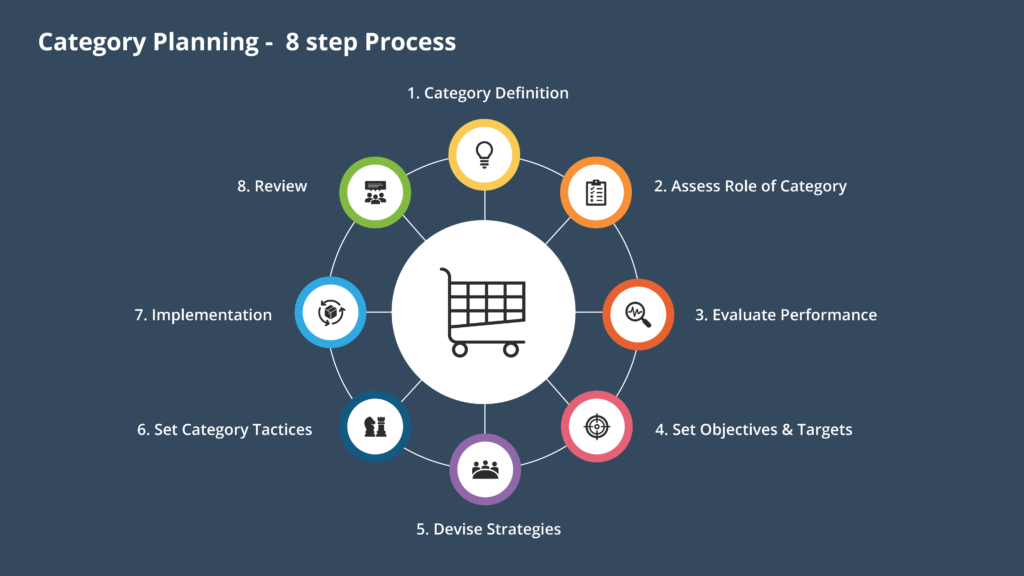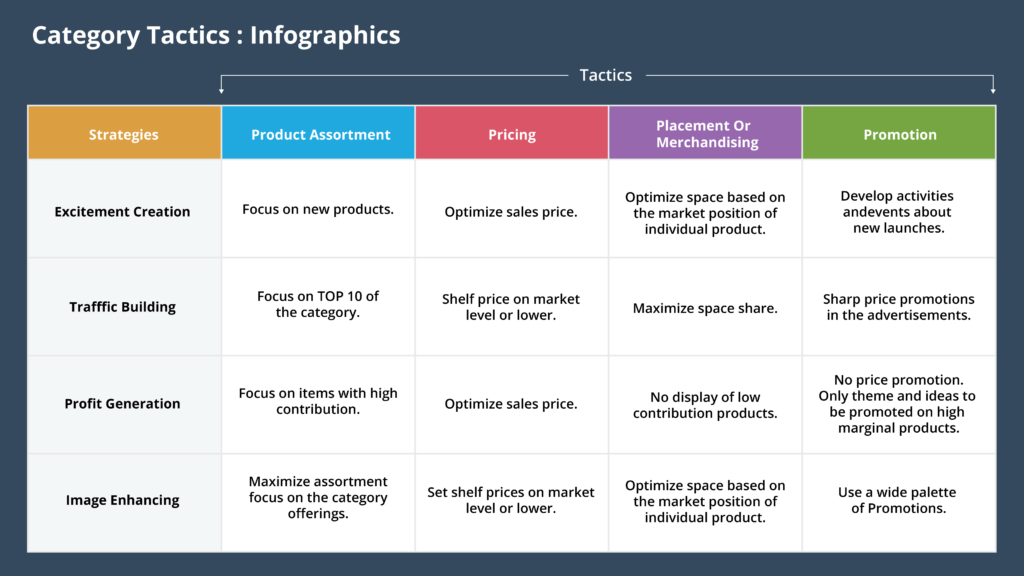
Category planning is the process of managing retail business that merchandise category outputs rather than the contribution of individual brands or models. The category planning process typically consists of eight steps which provide a systematic approach to utilize and apply to each product. Let’s take a look at each one of them in this blog,
1. Category Definition – The starting point for category planning is defining the scope of the category. The category manager needs to determine what will be included and excluded from the respective categories based on customer preferences.
2. Assess role of Category – The second part for category planning process is to determine the role of the respective category in given business scenario. The motive behind defining category roles is to understand the purpose of each category. For example, a category may be used to increase foot traffic or to bring customers to the store as a drawcard. Typically, there are four different roles of category which includes,
- Destination
- Routine
- Seasonal
- Convenience
3. Evaluate Performance – In this step, the current performance of the category is evaluated by performing SWOT analysis. It involves an assessment of consumers, market, retailer and suppliers. This analysis can be helpful to answer various questions like,
- Whether present categorization can be continued?
- Whether additional investment is required?
- What are the opportunities to improve category performance?
- What are the bottlenecks in category performance?
- How is competitor performing in the category?
4. Set Objectives & Targets – In this step, goals and objectives of the category are set in order to measure the success of the category. Category scorecards are often used to provide a summary of observations and analysis of the category.
5. Devise Strategies – Once the category has been assessed and goals and objectives are set, the next step is to develop the marketing and product supply strategies meeting the objectives of category role & performance. These strategies can aim to,
- Create excitement and draw customer’s attention.
- Increase category sales.
- Generate profits and cashflow.
- Enhance retailer’s image.
6. Category Tactics: Next step is to develop category tactics that ensure the category strategies are achieved. Category tactics focus on defining the practical actions to be made regarding product, price, promotion and merchandising. Crucial factors while defining these tactics would be category manager’s insights and past assignments, marketing strategies and time horizon considered for category planning. Below snapshot gives an idea how different tactics can be mapped against 4 different strategies for category planning.

7. Plan Implementation: The accuracy of plan determines the level of success a category can achieve and that is why this step is highly important. Some of the details to ensure seamless implementation of plans (both strategies and tactics) are as follows:
a. Activity: What needs to be done?
b. Timeline: When these tasks should be done?
c. Location: Where should they be done?
d. Ownership: Who will do them?
8. Review & Follow-Up: This is the last step for category planning process. Review enables a retailer and respective supplier to gauge the performance of a category and identify key areas of opportunities and threats to overcome by adopting alternate plans. This process should be on-going.
Category business plans are subjected to change with respect to change in assumptions laid down. So, in this time of rapid changes, adaptation is necessary. For instance, in case of any specific change in business environment, assumptions made earlier may not be valid. Therefore, category business plan must be modified with respect to change in underlying assumptions without any delay.
Download the latest version here and get started with ValQ Plan today.